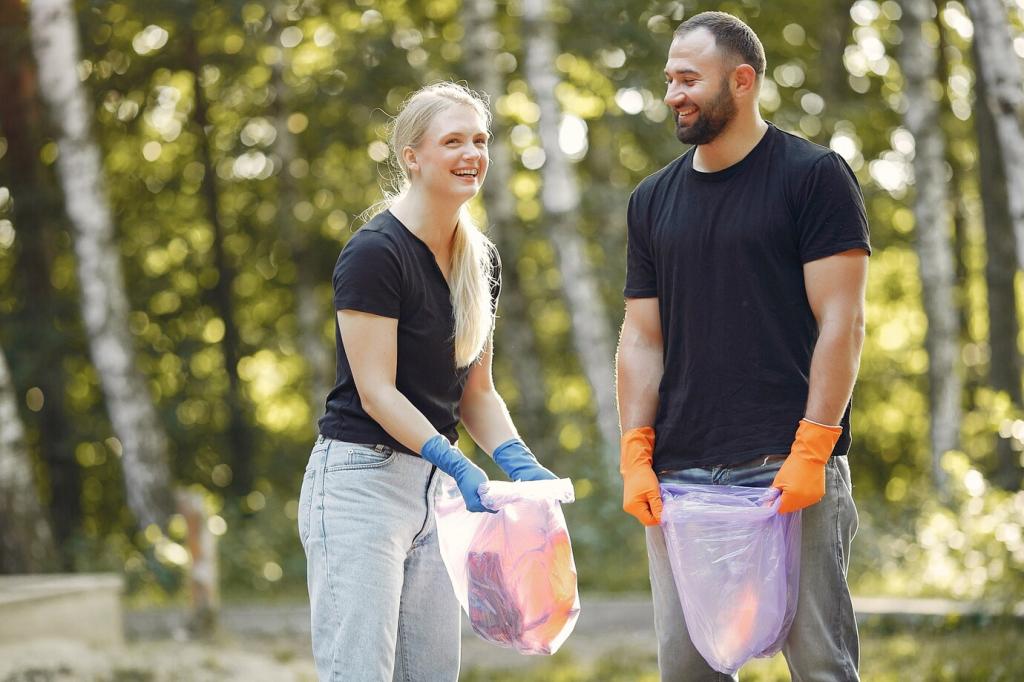
Sustainable Methods for Maintaining Furniture: Keep What You Love, Waste Less
Chosen theme: Sustainable Methods for Maintaining Furniture. Welcome to a gentle, practical way of caring for the pieces that make your home feel like home. Here you’ll find planet-friendly strategies, real stories, and small habits that dramatically extend furniture life while preserving character. Join our community, share your tips, and subscribe for new eco-smart maintenance ideas that help you save money, reduce waste, and keep beauty in daily use.
Eco-Friendly Cleaning Routines That Protect Finishes
Skip harsh chemicals that strip finishes and leave residues. A damp microfiber cloth removes dust effectively, while a plant-based soap solution tackles grime. Test in an inconspicuous spot and work with the grain for safer, longer-lasting results.
Eco-Friendly Cleaning Routines That Protect Finishes
A simple mixture of vinegar and distilled water cuts streaks on glass and lifts fingerprints from metal handles. Spray lightly, wipe immediately, and dry thoroughly to prevent moisture damage while minimizing disposable towels and unnecessary chemical exposure.



Naturally Nourishing Wood: Oils, Waxes, and Smart Touch-Ups
Linseed, tung, and walnut oils penetrate and condition wood without heavy fumes. Carnauba or beeswax provides a durable, low-sheen barrier. Apply thin coats, buff gently, and allow proper curing to avoid gummy surfaces and unnecessary reapplications.
Preventive Habits That Dramatically Extend Lifespan
Place coasters under drinks, felt pads beneath chair legs, and breathable covers on frequently used surfaces. These tiny shields prevent rings, dents, and abrasion. Replacing cents-worth pads can save you from costly repairs and premature replacements.

Upholstery Care With Low-Toxicity Techniques
Spot-clean with mild soap and cool water
Blot stains quickly using mild soap, cool water, and a white cloth to avoid dye transfer. Skip oversaturation, which can invite mildew and weaken adhesives. Gentle dabbing and patience reduce chemical use and preserve textile integrity.
Choose natural fibers and modular covers
Where possible, opt for linen, wool blends, or organic cotton with removable covers. Washable slipcovers extend life by isolating wear to replaceable fabric. Consider zippers and modular panels to repair sections rather than discarding entire sofas.
When to reupholster instead of replace
If the frame is sturdy and comfortable, reupholstery is often the greener, cheaper path over time. Consult local craftspeople, request durable fabrics, and ask about natural latex or wool batting to minimize petrochemical foams and synthetic off-gassing.


Thoughtful Repairs: Fix, Don’t Toss
Loose chair rungs or table legs often need only wood glue and clamps. Save original screws when possible, or source reclaimed hardware. Label disassembled parts carefully to avoid confusion, rushed reassembly, and unnecessary replacement purchases.
Thoughtful Repairs: Fix, Don’t Toss
For compression dents, a damp cloth and an iron on low can swell wood fibers back into shape. Work slowly, check progress often, and dry thoroughly. This gentle method avoids deep sanding and preserves precious surface material.

Prevent rust and corrosion with light oils
After cleaning, apply a whisper-thin coat of camellia or mineral oil to steel components. Wipe excess thoroughly. This barrier wards off moisture without sticky buildup, cutting down on harsh rust removers and premature repainting cycles.

Polish stone gently and seal only when needed
Use pH-neutral cleaners on marble or limestone to avoid etching. Seal sparingly based on use and manufacturer guidance. Over-sealing can trap stains and prompt aggressive stripping, which adds unnecessary chemicals and shortens surface life.
Circular Mindset: Sourcing, Sharing, and Community Know-How
Bring wobbly stools, sticky drawers, or stained cushions to community repair events. Learn from volunteers, swap supplies, and keep pieces in use. Tell us your city, and we will curate resources and tutorials tailored to local needs.
Look for salvaged lumber, vintage pulls, and secondhand fabrics to match period details and reduce demand for virgin materials. Share your favorite salvage yards, and subscribe for monthly guides on evaluating quality and authenticating older pieces.
When parting with furniture, clean, photograph clearly, and disclose repairs. Use local marketplaces or nonprofits that support reuse. Your well-cared-for items become someone else’s treasure, keeping value circulating and waste streams significantly lighter.

